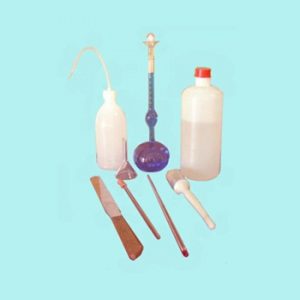

Negative environmental impacts caused by many materials, such as asbestos and various types of polymers, have triggered the search for environmentally friendly inputs, wood – cement composite materials are now being investigated with their potentials in this area.This study was carried out to evaluate the effect of selected production variables of dimensional stability on cement-bonded particle board produced from a mixture of Bambusa vulgaris, Gmelina arborea cement and addictive. Overall, measured data may serve as an important component of the database to set up guidelines required for controlling building materials usage in dwelling purposes. Moreover, perpetual monitoring of radiation level in clay- and mud-bricks should be intensified to avoid unwanted radiation exposure to dwellers. This study shows that the use of tile and granite should be minimized for building constructions. Associated radiation hazard parameters were estimated and the results are compared with the available literature data and the prescribed limits set by international regulatory bodies to identify the radiometric standards of the studied materials. The mean (GM) activity concentrations of the ⁴ K, ²²⁶Ra(²³⁸U) and ²³²Th in the surveyed samples are 286 ± 3, 29 ± 3 and 26 ± 5 Bqkg⁻¹ respectively.

A total of 173 samples representative of major building materials (both structural and decorative category) used for Nigerian dwellings were studied. Realizing the probable health risk via the exposures to gamma radiations caused by terrestrial radionuclides, concentrations of ⁴ K, ²²⁶Ra(²³⁸U) and ²³²Th radionuclides in popularly used building materials were investigated by gamma-ray spectroscopy. Information provided in this study could be used as a guideline for the manufacture of paperboard reinforced with kaolin as an additional constituent for quality improvement. It revealed that printing papers could be better raw material for manufacture paperboard than corrugated papers. This study shows that boards from printing papers were more dimensionally stable than corrugated papers.


Similarly, as the proportion of kaolin and cement content were increased, the rate of moisture uptake to cavity decreased. As the nominal density and kaolin content were increased from 12.5 to 37.5%, an increase was observed in density and strength properties. The board of proportion 25/25 of kaolin/cement was densest with high strength. The values obtained range from 0.40 to 0.94 g/cm 3, 51.19 to 68.10%, 0.14 to 3.10%, 0.01 to 1.69 Nmm-2, and 119.98 to 567.32 Nmm-2 for observing the density, water absorption, thickness swelling, modulus of rupture, and modulus of elasticity, respectively. The dimensional and strength properties of the boards were investigated. Paperboards of thickness 0.6 cm with densities of 0.8, 0.9, and 1.0 g/cm 3 were produced from waste papers mixed with cement and kaolin. Application of substandard cement in building construction can lead to structural failure. In line with this trend, Sample D with LOI = 14.56% came up with a 28 days compressive strength of 25.9 N/mm 2 which is clearly below the minimum standard requirement of 32.5 N/mm 2. However, the study revealed that as from LOI above 9.2%, the LOI increases with decreasing compressive strength. None of the 10 samples tested met the standard requirements for strength class of 52.5N/52.5R. Samples (C, I, H, G, A, J, and F) with additive levels manifesting in the form of loss on ignition (LOI) between 5% and 11.2% were still able to satisfy the standard requirements for strength classes of 32.5N/32.5R and 42.5N/42.5R. From the results obtained, all the samples, except B, indicated presence of various levels of additives. Their physicochemical parameters were tested in accordance with the Nigerian Industrial Standard, NIS 445-2003, and other associated standards. Ten cement samples (labeled A-J) commonly used for construction works in Nigeria were taken from different parts of the country.


 0 kommentar(er)
0 kommentar(er)
